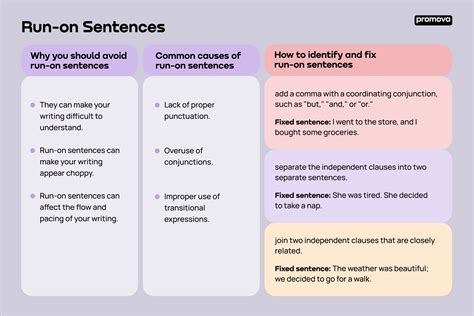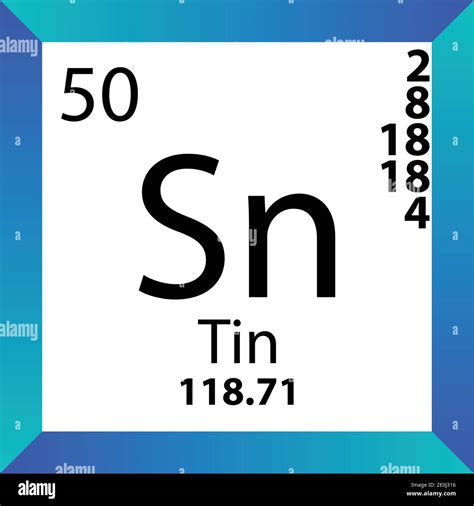Run-on sentences are a common grammatical error that can make written content difficult to read and understand. A run-on sentence occurs when two or more independent clauses (i.e., clauses that could stand alone as separate sentences) are joined without proper punctuation or conjunctions. To fix run-on sentences, it's essential to understand the basics of sentence structure and punctuation. In this article, we'll explore five ways to fix run-on sentences, providing examples and explanations to help you improve your writing skills.
Understanding Run-on Sentences

A run-on sentence typically involves two or more independent clauses that are not properly connected. For instance, “I went to the store, I bought some milk” is a run-on sentence because it contains two independent clauses (“I went to the store” and “I bought some milk”) that are not joined with proper punctuation or a conjunction. To fix this error, you need to use punctuation, conjunctions, or rephrase the sentence to make it clear and concise.
Method 1: Using Periods to Separate Independent Clauses
One way to fix a run-on sentence is to use a period to separate the independent clauses. This method is useful when the clauses are closely related but can stand alone as separate sentences. For example, “I went to the store. I bought some milk” is a corrected version of the previous run-on sentence. By using a period, you’re indicating that each clause is a separate sentence, making the text easier to read and understand.
| Original Sentence | Corrected Sentence |
|---|---|
| I went to the store, I bought some milk | I went to the store. I bought some milk |

Method 2: Using Conjunctions to Connect Independent Clauses
Another way to fix a run-on sentence is to use a conjunction to connect the independent clauses. Conjunctions like “and,” “but,” “or,” “so,” and “yet” can help link clauses together, making the sentence clearer and more concise. For example, “I went to the store, and I bought some milk” is a corrected version of the run-on sentence. By using the conjunction “and,” you’re indicating that the two clauses are related and should be considered together.
Method 3: Using Semicolons to Separate Independent Clauses
Semicolons can be used to separate independent clauses that are closely related in meaning. This method is useful when you want to indicate a stronger break between the clauses than a comma would provide. For example, “I went to the store; I bought some milk” is a corrected version of the run-on sentence. By using a semicolon, you’re indicating that the two clauses are independent but closely related.
Method 4: Using Subordinating Conjunctions to Connect Independent Clauses
Subordinating conjunctions like “because,” “although,” and “if” can be used to connect independent clauses, making one clause subordinate to the other. This method is useful when you want to indicate a cause-and-effect relationship or a condition between the clauses. For example, “I went to the store because I needed to buy some milk” is a corrected version of the run-on sentence. By using the subordinating conjunction “because,” you’re indicating that the first clause is dependent on the second clause.
Method 5: Rephrasing the Sentence to Avoid Independent Clauses
Finally, you can fix a run-on sentence by rephrasing the sentence to avoid using independent clauses. This method is useful when you want to make the sentence more concise and clear. For example, “I went to the store to buy some milk” is a rephrased version of the original run-on sentence. By using an infinitive phrase (“to buy some milk”), you’re indicating the purpose of the action, making the sentence more concise and clear.
Key Points
- Run-on sentences can be fixed by using periods, conjunctions, semicolons, subordinating conjunctions, or rephrasing the sentence.
- Using periods to separate independent clauses is useful when the clauses are closely related but can stand alone as separate sentences.
- Conjunctions like "and," "but," "or," "so," and "yet" can be used to connect independent clauses, making the sentence clearer and more concise.
- Semicolons can be used to separate independent clauses that are closely related in meaning, indicating a stronger break between the clauses than a comma would provide.
- Subordinating conjunctions like "because," "although," and "if" can be used to connect independent clauses, making one clause subordinate to the other.
What is a run-on sentence?
+A run-on sentence is a sentence that contains two or more independent clauses that are not properly connected with punctuation or conjunctions.
How can I fix a run-on sentence?
+You can fix a run-on sentence by using periods, conjunctions, semicolons, subordinating conjunctions, or rephrasing the sentence to avoid independent clauses.
What is the difference between a comma and a semicolon?
+A comma is used to separate items in a list or to set off nonessential clauses, while a semicolon is used to separate independent clauses that are closely related in meaning.



